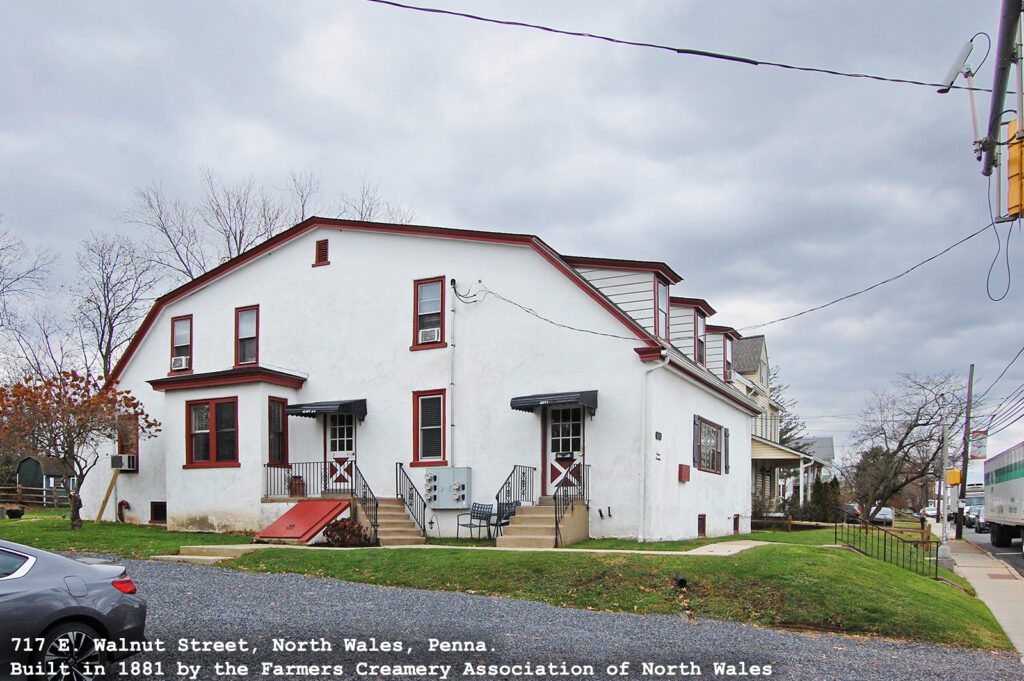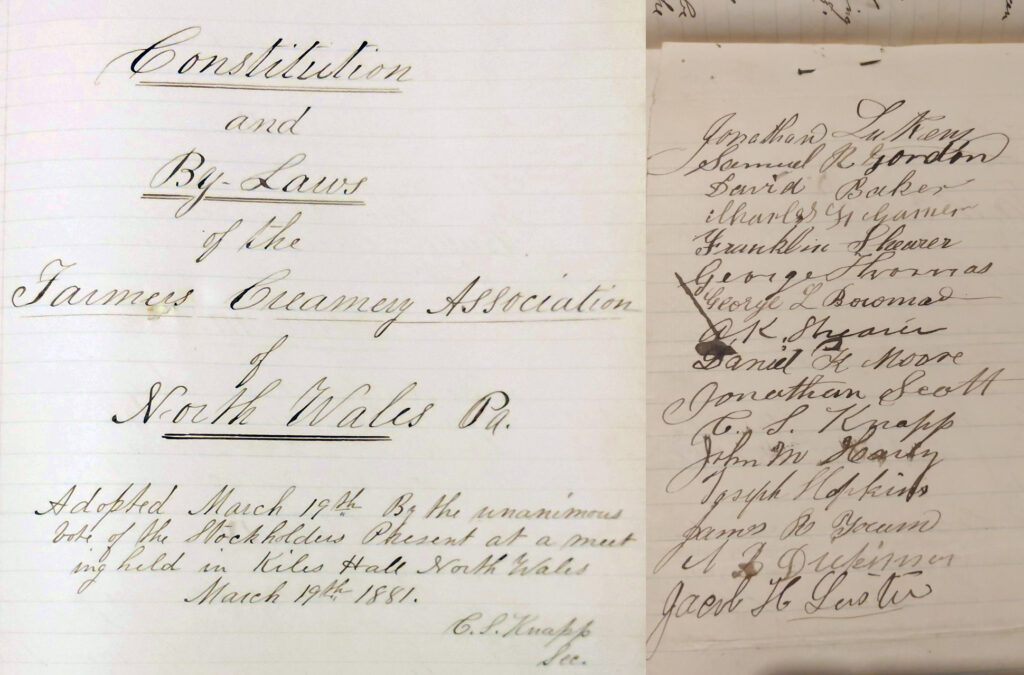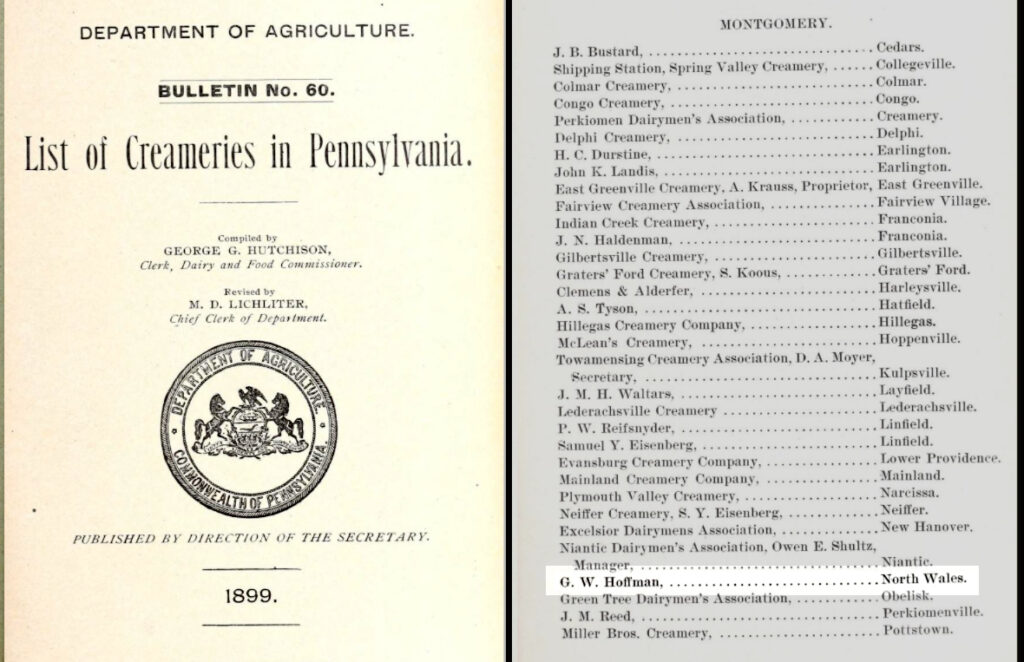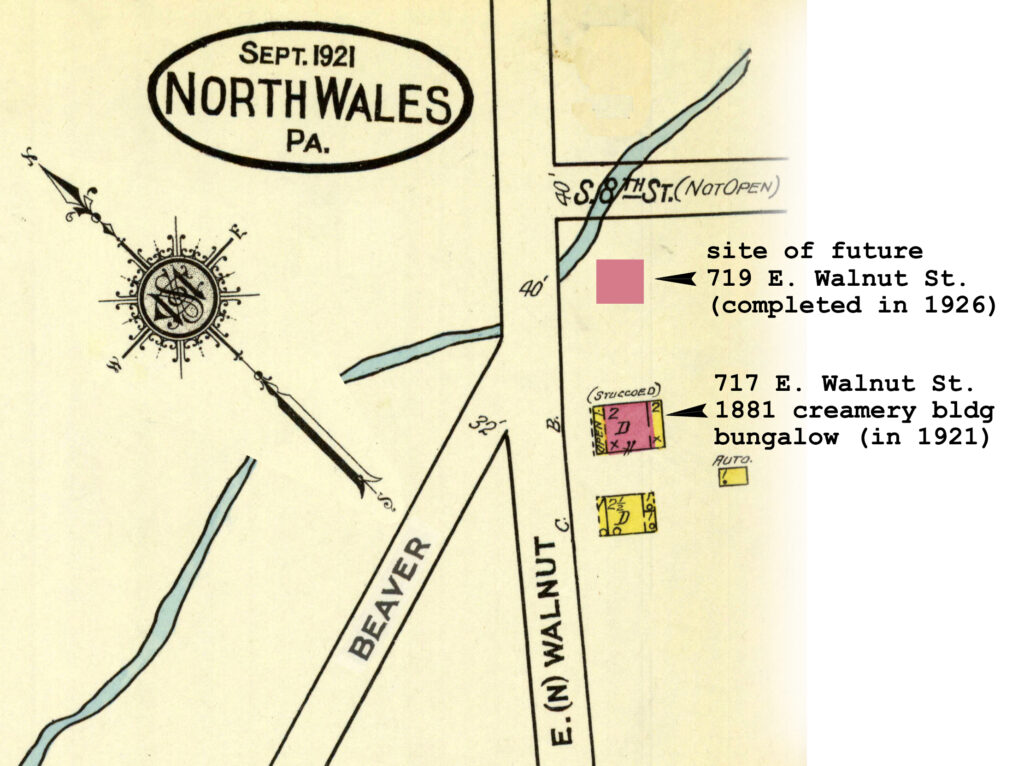In 1880, North Wales businessmen and local farmers pooled their resources to establish a creamery in the borough for “the manufacture and sale of butter, cheese, and other products of milk.”

During the 19th century the countryside surrounding North Wales was primarily agricultural. In addition to or in place of raising crops, dairy farming could be a sustainable enterprise, the problem being that each day, dairy farmers needed to either process or transport that morning’s milk to a creamery. This needed to be done day in and day out, 365 days a year. In the era before refrigeration, before motorized trucks, and before paved roads to run them on, that left few options. Full milk cans could be hauled to the Reading Railroad’s freight station for shipment to a processing facility, but the high cost of shipment could make the enterprise untenable.

So it was that the Farmers Creamery Association of North Wales was formed. A 1 acre plot of land was purchased from Jos. Hopkins “on the north side of the borough.” A substantial masonry building was built to the following specifications:
34 feet x 42 feet
First story stone, second story brick
Windows:
9×14, 12 light over 12 light, lower story
9×12, 12 light, second story [the term “light” refers to glass panes]
Granite door sills (3)
This building is still standing, after several major alterations, at 717 E. Walnut Street in North Wales borough, opposite the Wawa. Today the building serves as a 5 unit apartment house.
At a March 19th, 1881 meeting of stockholders of the Farmers Creamery Association of North Wales, the following by-laws were unanimously adopted:
1). If adulterated milk is furnished by anyone, first offense shall be penalty of $10. Second and subsequent offense: $20. [Equivalent to $300 and $600 in 2024 dollars]
2). Milk shall be delivered between 5:30 a.m. and 7:30 a.m. from May 1 to October 1. Between 7:00 a.m. and 9:00 a.m. the rest of the year.

The Ambler Gazette newspaper reported that the North Wales creamery “did a thriving business.” Eventually however the creamery was no longer profitable and ceased operations. The creamery building was converted to a laundry. Later, owner George Hoffman converted the structure again, this time into a large bungalow-style house. Hoffman subdivided the lot and in 1920 sold the ex-creamery house to one E. F. Grann.

In 1925 Hoffman broke ground for a new house on the lot next door to the former creamery, on the southwest corner of 8th & Walnut Streets. Still standing today at 719 W. Walnut, one and a half stories in height with the first floor of brick and the second of wood, the compact home is of the American Craftsman style so popular at the time. The Hoffman family moved into 719 W. Walnut Street in April of 1926.
